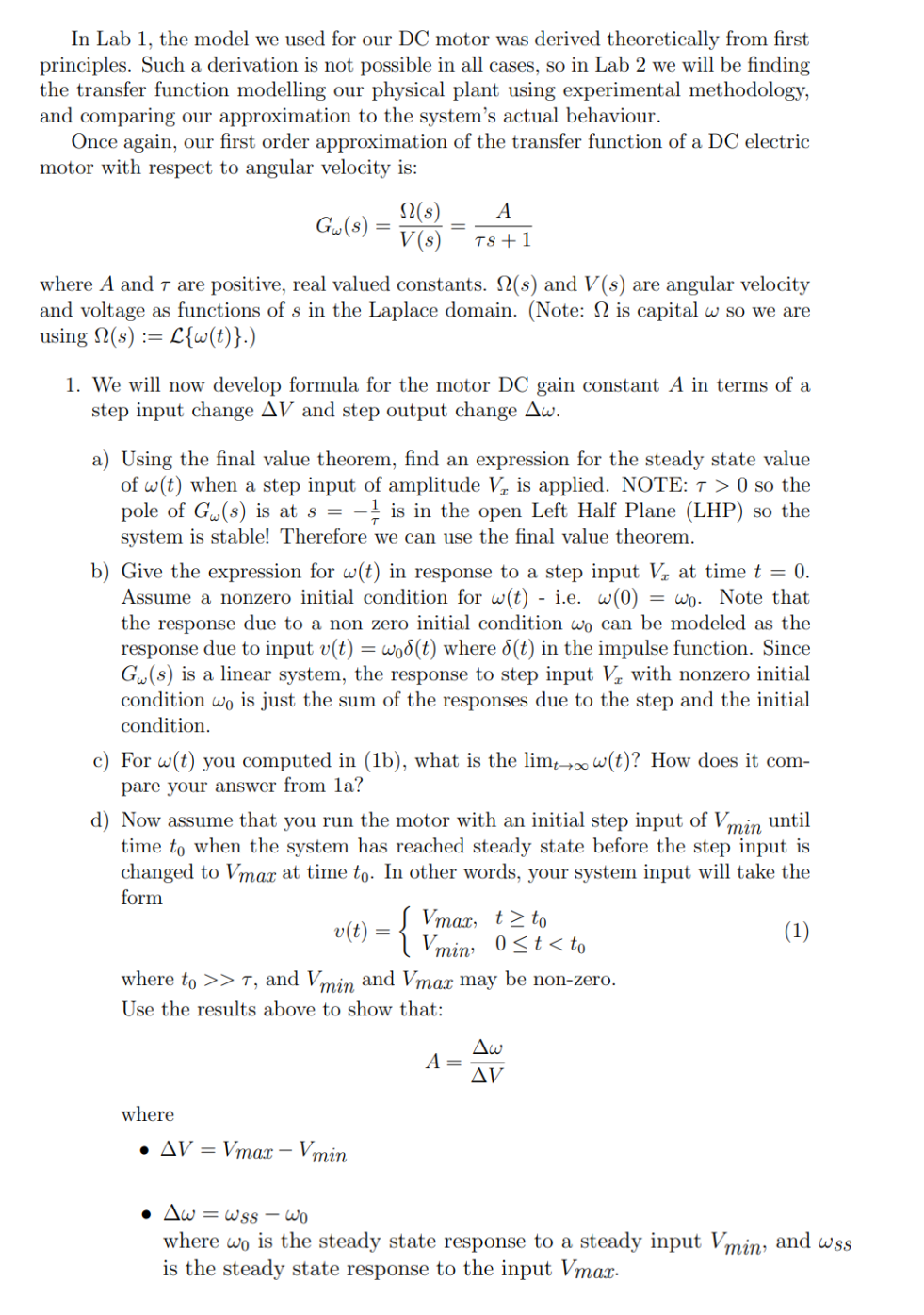
In Lab 1, the model we used for our DC motor was derived theoretically from first principles. Such a derivation is not possible in all cases, so in Lab 2 we will be finding the transfer function modelling our physical plant using experimental methodology, and comparing our approximation to the system's actual behaviour. Once again, our first order approximation of the transfer function of a DC electric motor with respect to angular velocity is: G(s)=V(s)(s)=s+1A where A and are positive, real valued constants. (s) and V(s) are angular velocity and voltage as functions of s in the Laplace domain. (Note: is capital so we are using (s):=L{(t)}.) 1. We will now develop formula for the motor DC gain constant A in terms of a step input change V and step output change . a) Using the final value theorem, find an expression for the steady state value of (t) when a step input of amplitude Vx is applied. NOTE: >0 so the pole of G(s) is at s=1 is in the open Left Half Plane (LHP) so the system is stable! Therefore we can use the final value theorem. b) Give the expression for (t) in response to a step input Vx at time t=0. Assume a nonzero initial condition for (t) - i.e. (0)=0. Note that the response due to a non zero initial condition 0 can be modeled as the response due to input v(t)=0(t) where (t) in the impulse function. Since G(s) is a linear system, the response to step input Vx with nonzero initial condition 0 is just the sum of the responses due to the step and the initial condition. c) For (t) you computed in (1b), what is the limt(t) ? How does it compare your answer from 1a? d) Now assume that you run the motor with an initial step input of Vmin until time t0 when the system has reached steady state before the step input is changed to Vmax at time t0. In other words, your system input will take the form v(t)={Vmax,Vmin,tt00t
>, and Vmin and Vmax may be non-zero. Use the results above to show that: A=V where - V=VmaxVmin - =ss0 where 0 is the steady state response to a steady input Vmin, and ss is the steady state response to the input Vmax







